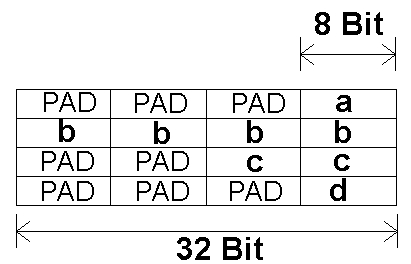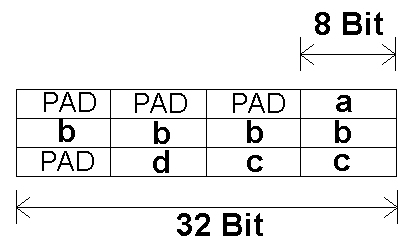devendra_devgupta
Member level 3
Hello friends,
I have gone through various sites and understood what is structure padding, But no body tells it in the context of a microcontroller. My questions are:
1) Why only structures are padded
2) what is the difference between padding of same structure in 8 bit, 16 bit and 32 bit microcontrollers
I have gone through various sites and understood what is structure padding, But no body tells it in the context of a microcontroller. My questions are:
1) Why only structures are padded
2) what is the difference between padding of same structure in 8 bit, 16 bit and 32 bit microcontrollers

